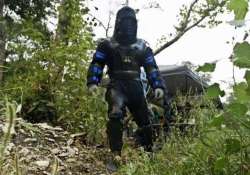Discovery Channel's 'Eaten Alive?' to premiere in India on New Year's Eve
New Delhi: Try making your New Year's Eve unique by watching a snake researcher attempting to get eaten by a giant snake alive! "Eaten Alive?", a two-hour special, will premiere on Discovery Channel.The programme will

New Delhi: Try making your New Year's Eve unique by watching a snake researcher attempting to get eaten by a giant snake alive! "Eaten Alive?", a two-hour special, will premiere on Discovery Channel.
The programme will feature snake researcher and conservationist Paul Rosolie, who has
dedicated his career to study the Giant Green Anaconda, the world's largest and most powerful snake and the top predator in the Amazon. He will try to be eaten alive by the creature.
This challenge was created to focus attention on one of the most beautiful and threatened parts of the world, the Amazon rain forest and its wildlife.
"I've seen first hand how the Amazon rain forest is being destroyed. It is so rampant that we may be the last generation with the opportunity to save it. People need to wake up to what is going on. What better way is there to shock people than to put my life on
the line with the largest snake on the planet, the Green Anaconda," Rosolie said in a statement.
Rosolie has specialised in the western Amazon for more than a decade and his efforts have helped create awareness about the Peruvian rain forest, the natural habitat of the Giant Green Anaconda.
This year, over a 60-day period, crews chronicled Rosolie's expedition to the hidden realm deep within the Amazon jungle, where Rosolie believes the largest anacondas in the world live and breed.
Rosolie relied on a custom-built suit he designed for his protection when he decided to persevere through the constriction and potential ingestion deep into the belly of the beast.
Constructed by Rosolie and his team of engineers working alongside herpetologists, the suit was built to ensure the snake's safety just as much as it was to protect Rosolie's life.
He risked life and limb in the hope of measuring the constriction force of a massive anaconda, to gain more insight on its hunting and feeding behaviour, and ultimately to gain a greater understanding of the inner workings of the creatures.